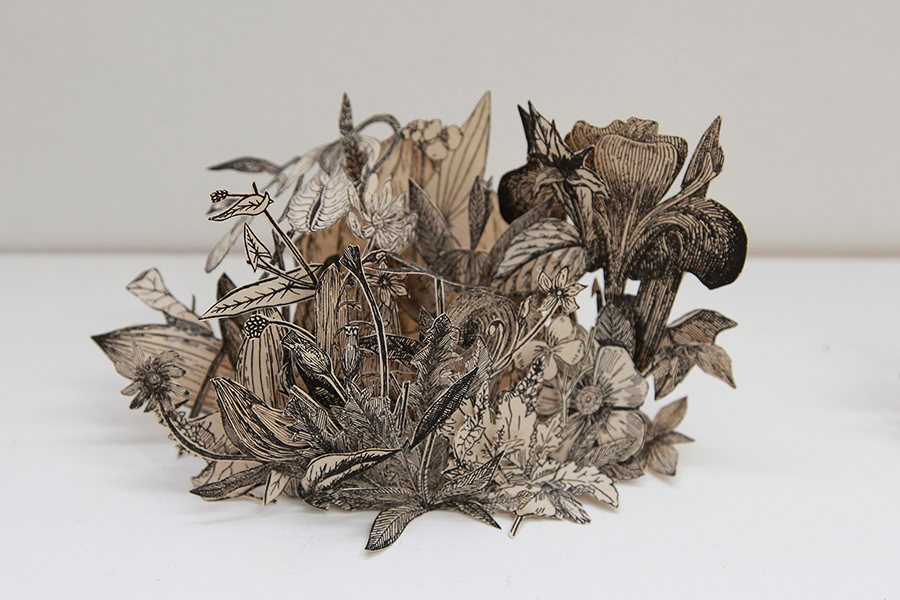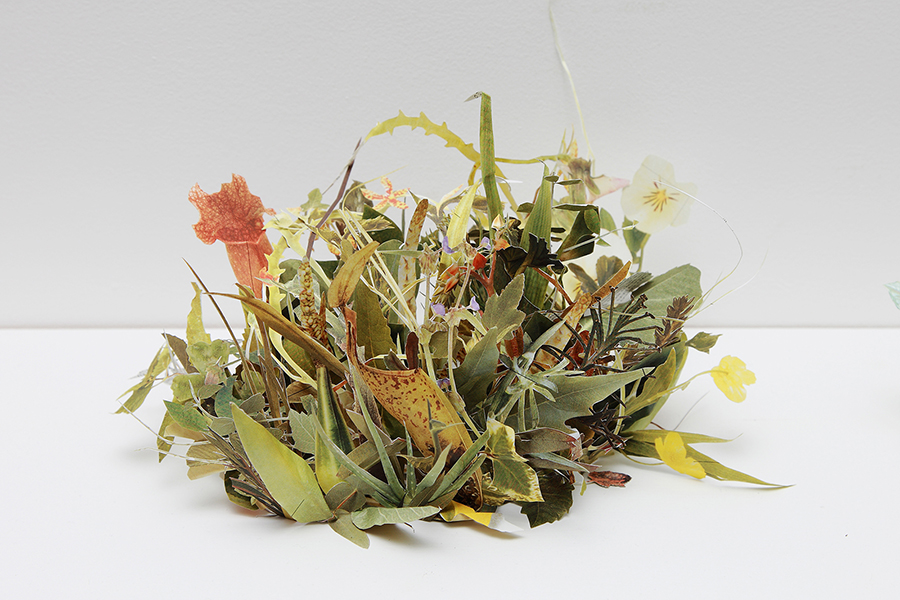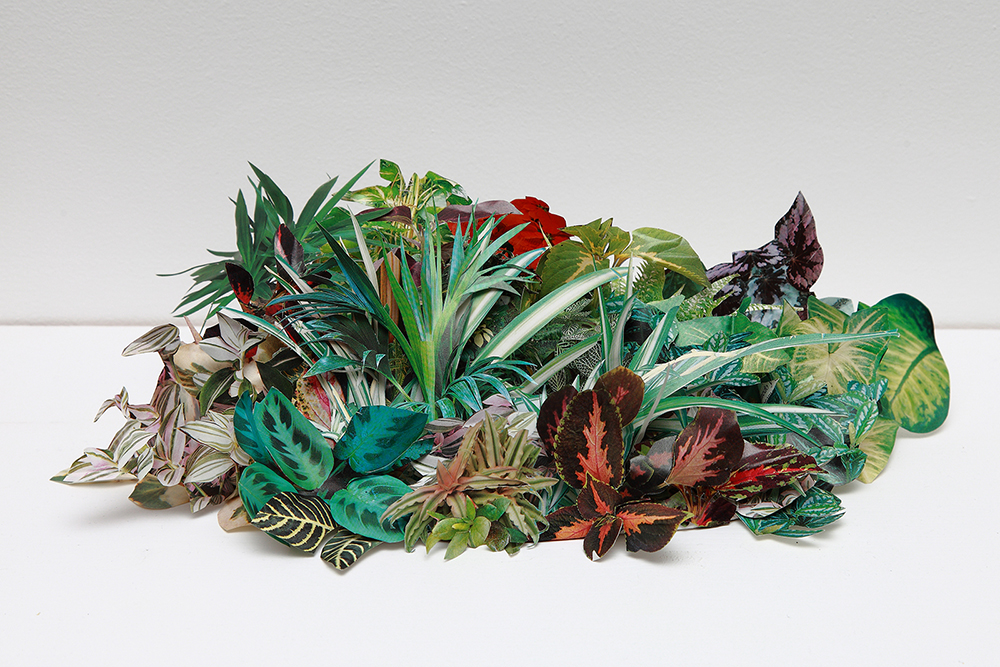Rodrigo Arteaga’s work deals with the degrees of nature representation. The artist’s creation process is at the intersection of disparate sciences or knowledges such as anatomy, botany, cartography and astronomy. « I have worked for some time with found books of anatomy, botany, astronomy, cartography, encyclopedias, most of them out of date. I am interested in the fragility of knowledge and certainty, the way in which publications that had the ambition to gather the newest and most exact observations of the world end up becoming obsolete and forgotten in old libraries. It means to work with the ways in which people give meaning to the world through its organization, classification. I propose a dismantling of the functionality of this things, transforming the explanatory role of medical illustrations, mechanic, maps, etc, by giving them new meaning, or revealing a deeper one implied. »
Indeed, his work highlights the ambiguity of representation and perception and underlines « the tensions between bipolar terms: science and art, micro and macrocosm, the individual and the universe, detail and structure, order and chaos, interior and exterior. »
Through drawings, collages, installations and sculptures, Rodrigo Arteaga wonders about the knowledge process, and extends his reflection to the interactions between distinct disciplines by cultivating a new approach to human awareness and understanding of the environment.

Herbarium of botanical studies, 2015
Cut-out botanical books, Variable dimensions
« Herbarium of botanical studies is made with different botanical atlases that concentrate on ordering nature in its representation by their comparison in the same exhibition space. I completely cut-out all the illustrations of each volume and then gathered them in different groups, as if each one of them were a garden, or a plant species, to emphasize in what exactly do they differentiate. Representation in a way is first always a representation of itself, the person behind it, his intention, as by which he includes on it as by which he leaves out, this is observed through the graphic quality of each group, type of printing, colour, etc. In that sense, these publications speak more about their authors than about the intended subject matter. »
The nature is not reproduced but constructed as a trompe l’œil. « It is something like a vitrine from a natural history museum in which the object of study is representation itself, or a herbarium in which nature isn’t actually there. »
The artist cut out the illustrations of plants in botanical books and combine them into an arrangement to create an hybrid plant, which is the product of his imagination. Starting from the flatness of the paper, his process imimates the natural organic growth to create three-dimensional sculptures.
This meditation is dedicated to life but implicitly evokes death through the illusion of biological life cycle, even if the plants of the Herbarium of botanical studies will never fade. Mark Dion in conversation with Miwon Kwon explained « what was thought to be the observation of life was actually the study of death. »
Even if these hybrid plants look like reproduction of real plants, they are always different from the original object of study. « It is the observation of nature as a way of understanding it through the obsessive repetition of a gesture and the insistence on its meaning. »
Each sculpture of Rodrigo Arteaga’s Herbarium is an ephemeral poetry.

Herbarium of botanical studies, 2015
Cut-out botanical books, Variable dimensions

